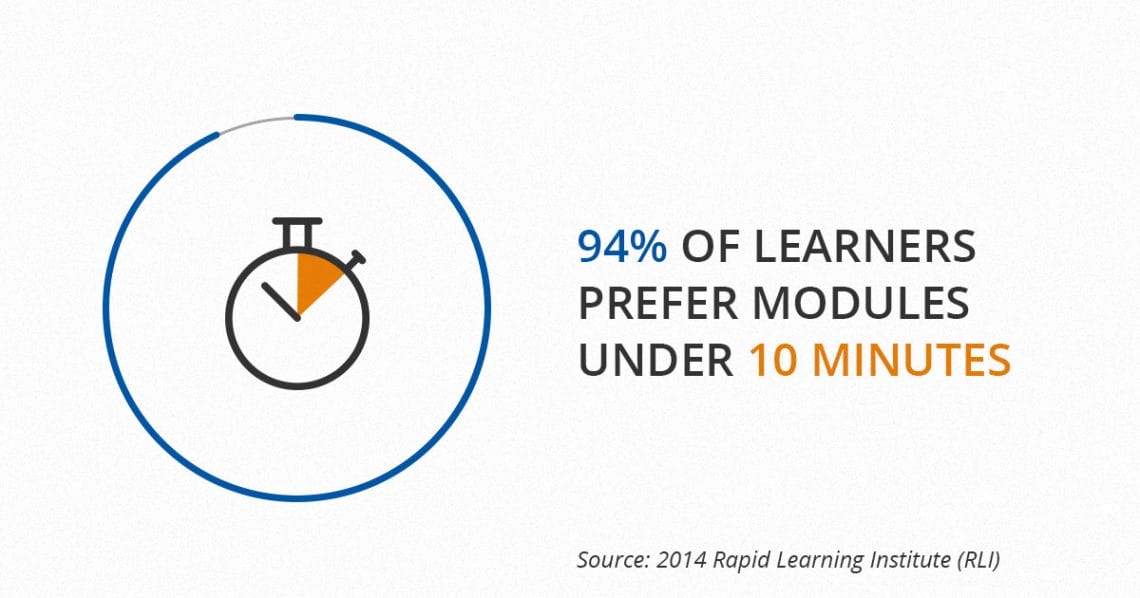
Make the most of online training elements to boost your training program’s impact
In our previous post, we covered the first four tips for how companies can begin using blended learning to support and strengthen the value of instructor-led training. But what sets a truly impactful and tech-forward corporate training program apart from the rest? In this second post, we talk about the steps you can take to really kick your training program into high-gear with a successful blended learning strategy.
Align Lesson Plans And Training Curriculum
Organization and careful planning are the cornerstones of classroom corporate training. This pertains to the lesson plans, training materials and curriculum. Make sure that you extend this organization to your online training elements. Map out every step of the process, including both in-person and online training activities and assessments. Better yet, create a storyboard that highlights your online modules, multimedia and interactive components.
All of these online elements should be designed with employees’ needs, goals and preferences in mind. They should also align and support the material being covered in the classroom. For example, surveys and pre-assessments can help you identify performance gaps and fill them with customized online training content. Do everything you can to ensure that the learner’s experience of the classroom and online environments feels logical and, ideally, seamless.
Provide Personalized Feedback And Timely Intervention
Even top performing employees require help from time to time. Every member of your staff has specific areas for improvement they need to work on, even if they aren’t always aware of these opportunities. For this reason, you must provide personalized feedback that targets their specific strengths and weaknesses.
There are many ways that online learning can support this important aspect of your corporate training program. For instance, immediate feedback can be integrated into online learning materials. A corporate eLearning course can be designed to highlight performance issues and recommend additional online training modules to address these issues. Classroom training also provides the opportunity to provide one-on-one feedback so that employees don’t feel like they’re being alienated.
Tech Tools With Access To Microlearning Resources
Modern classrooms are equipped with tech resources, such as tablets and PCs. If you’re taking a bring your own device (BYOD) approach, your employees are using their own mobile devices to access the online training materials. This makes it even more unlikely that you’ll be able to hold their attention for long periods of uninterrupted time. You’ll achieve better results under these conditions by providing them with microlearning online training resources that offer bite-sized online activities.
A study on microlearning conducted by the Rapid Learning Institute found that 94% of learners have a preference for online training modules that clock in under 10 minutes in length. For example, a 5-minute task tutorial or a serious game that helps employees apply the principles they’ve learned.

Ongoing Evaluation And Improvement
The best classroom training programs are those that trainers consider works in progress. By gathering feedback both on and offline, you can better identify areas for continuous improvement. Both employee feedback and LMS reports are valuable tools that can help in this regard. For example, low employee participation within online training can indicate boredom, content that is too challenging, or a lack of motivation. You’ll need to talk to your learners and take a closer look at your curriculum and course design to get to the root of the problem.
Don’t forget to get your trainers involved so that they can offer their input as well, keeping in mind that they’re interacting with employees on a regular basis. This gives them great insights into how you might finetune your corporate training strategy to meet employees’ needs. Schedule weekly or monthly meetings to catch up and get their honest feedback in order to supplement the reports you can pull from your learning management system.
By understanding how online and classroom learning strategies can be designed to support one another, trainers can deliver more easily on the promise of blended learning. Each medium has its strengths and weaknesses, but together they can create a learning program that encourages learner engagement by providing training that is interactive, immersive – and perhaps even entertaining!
Discover key strategies for making the most of online training elements within a blended learning environment. Start your free trial today!
